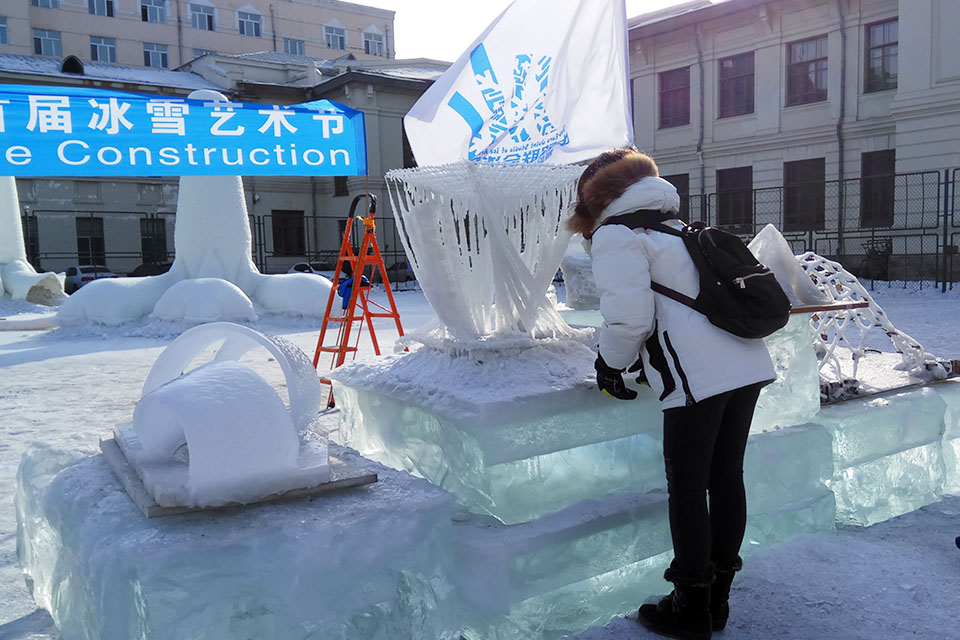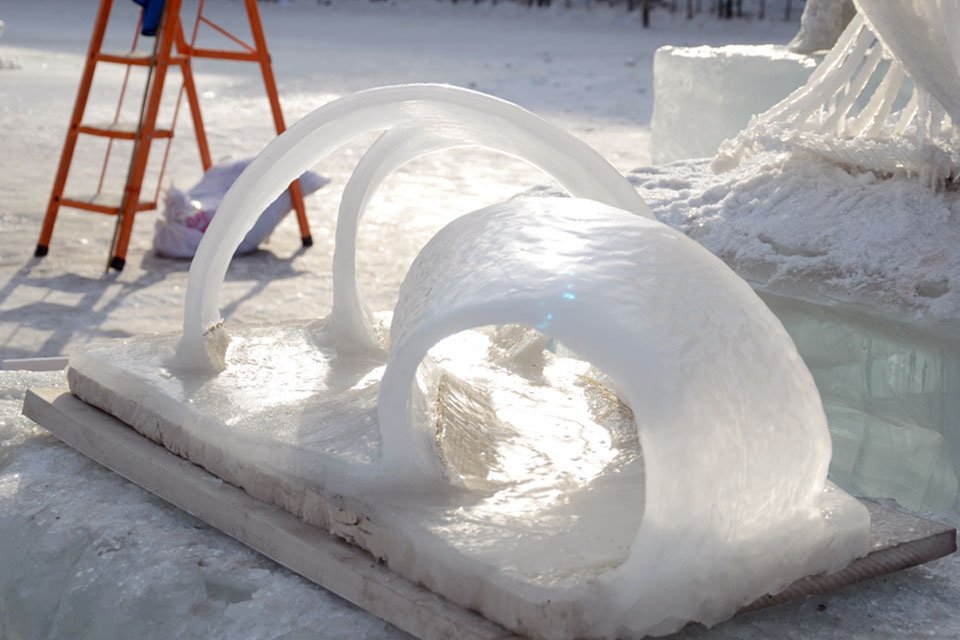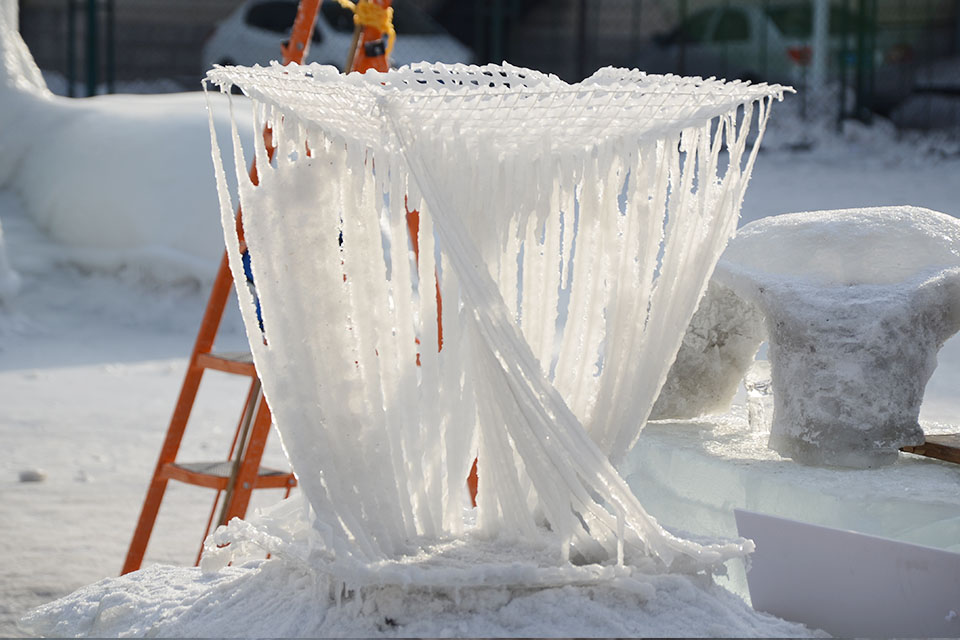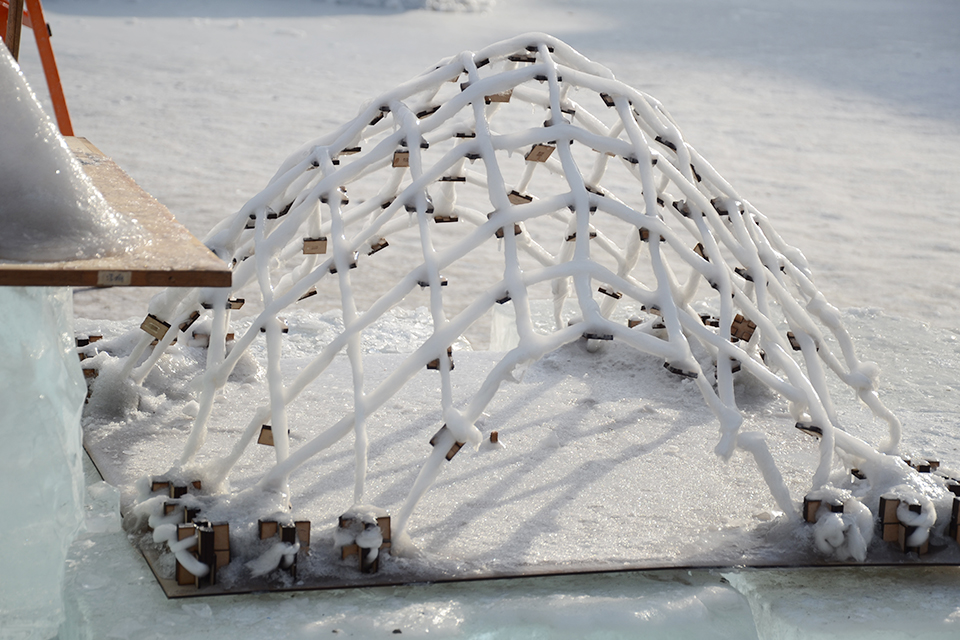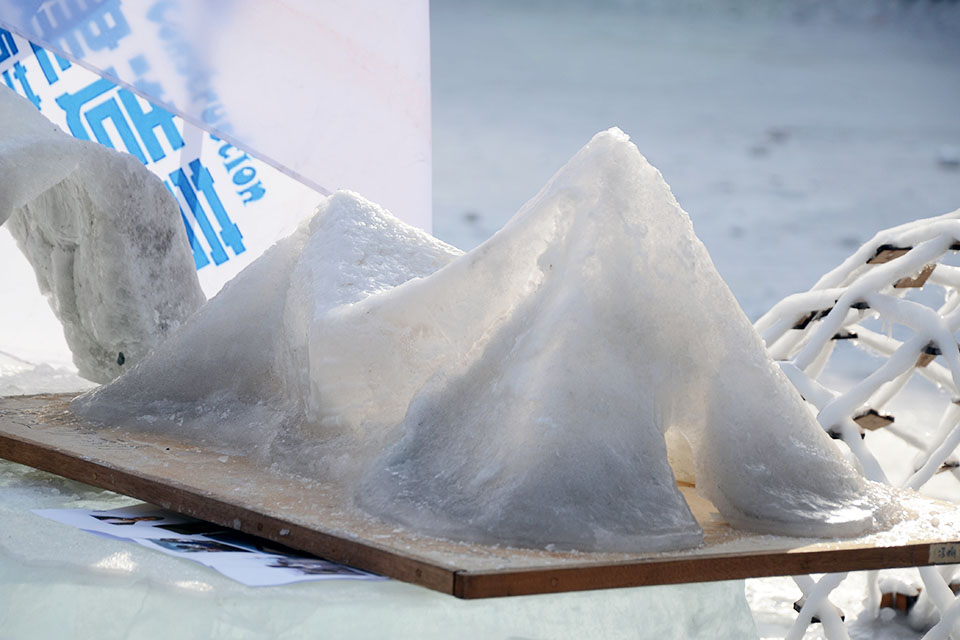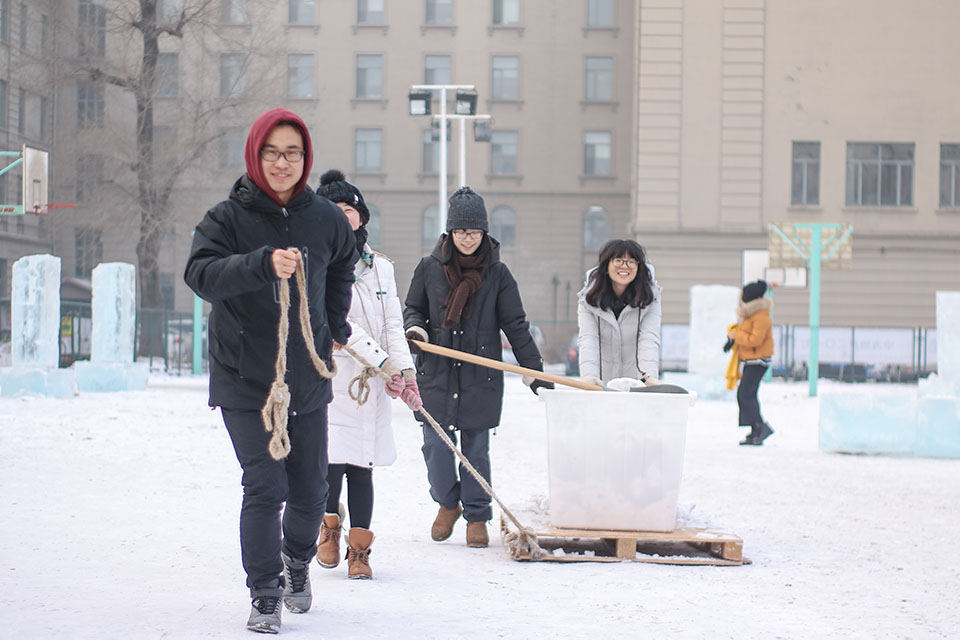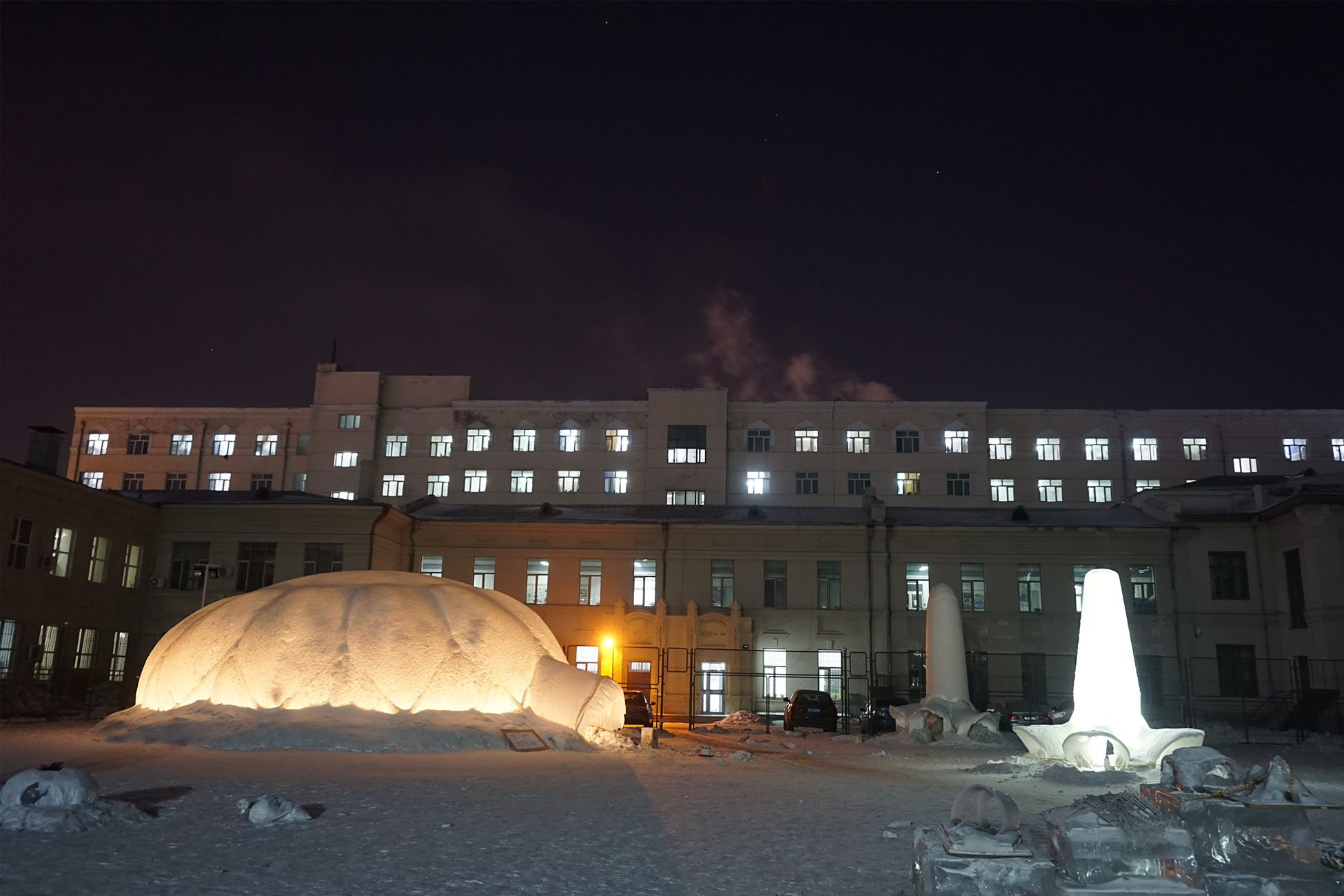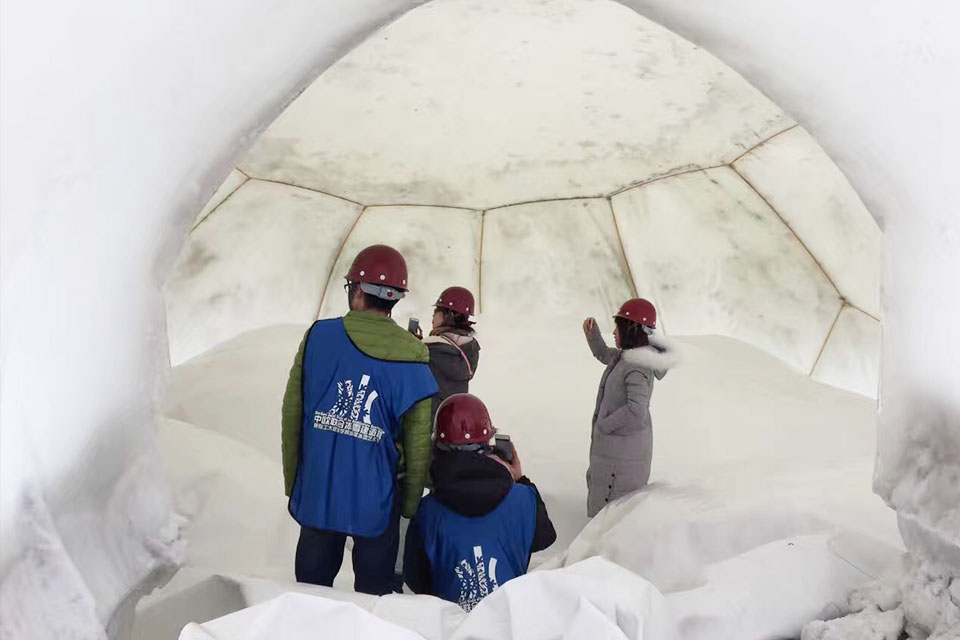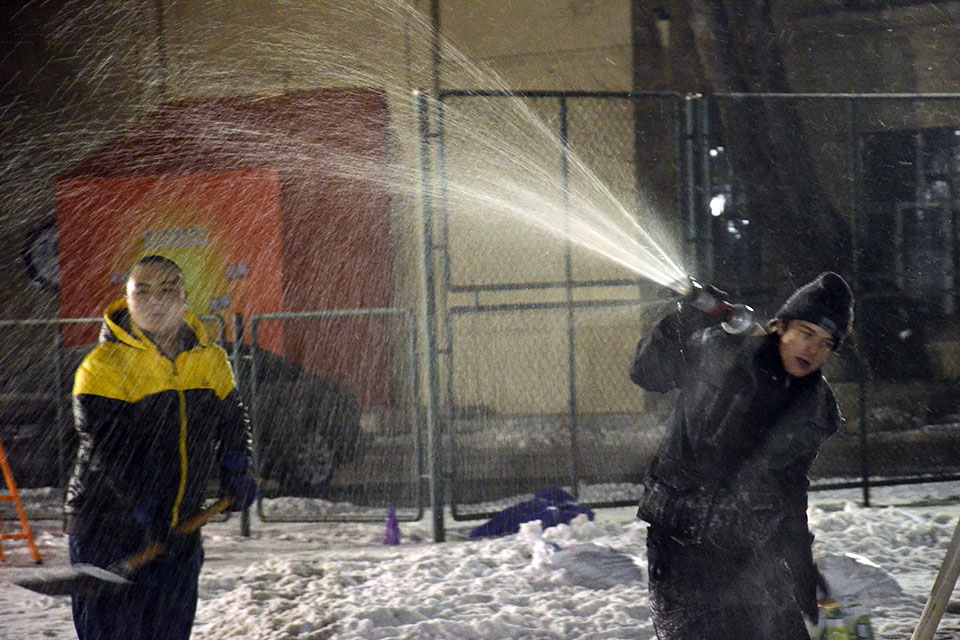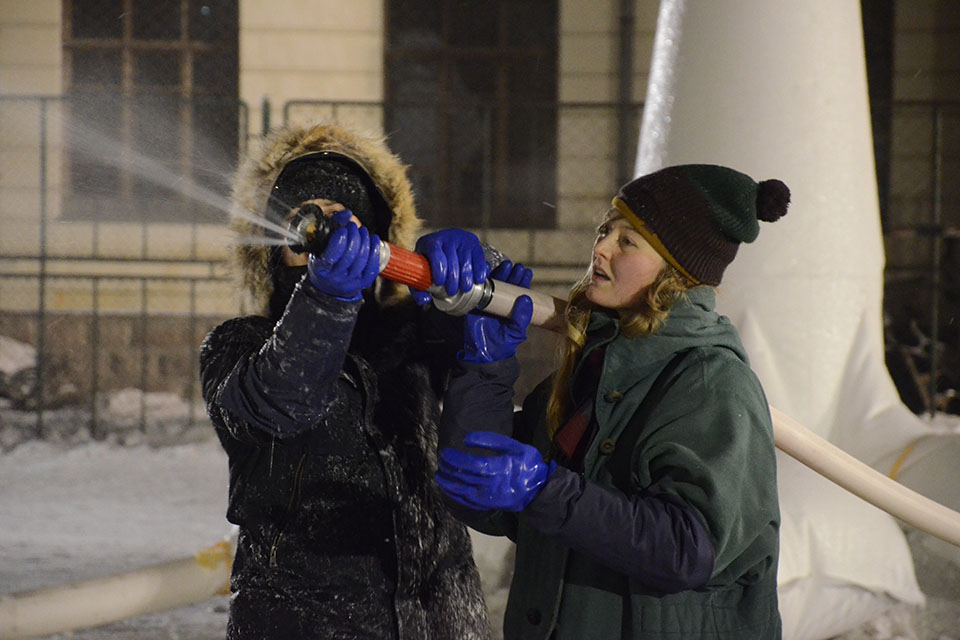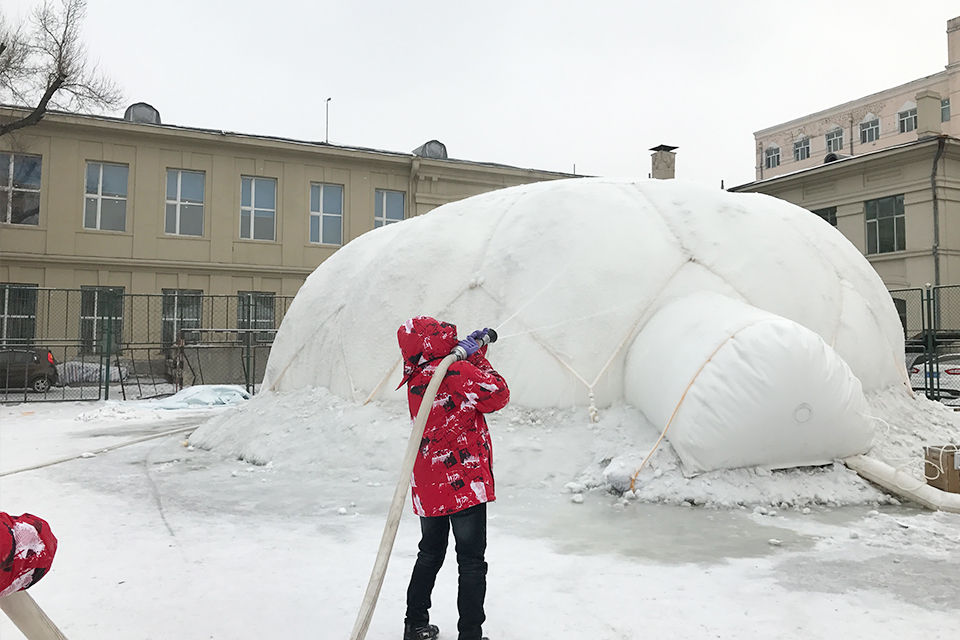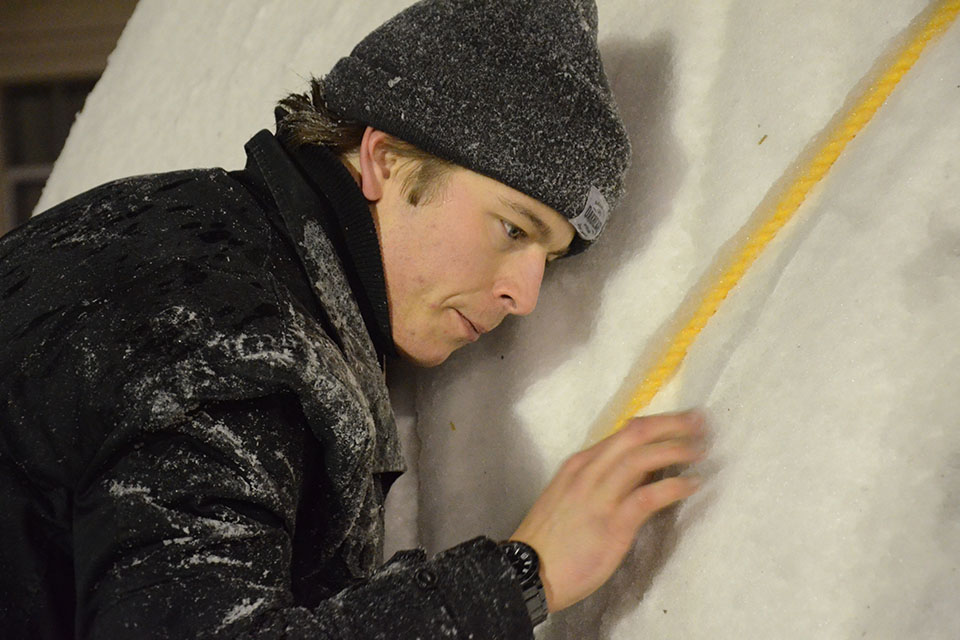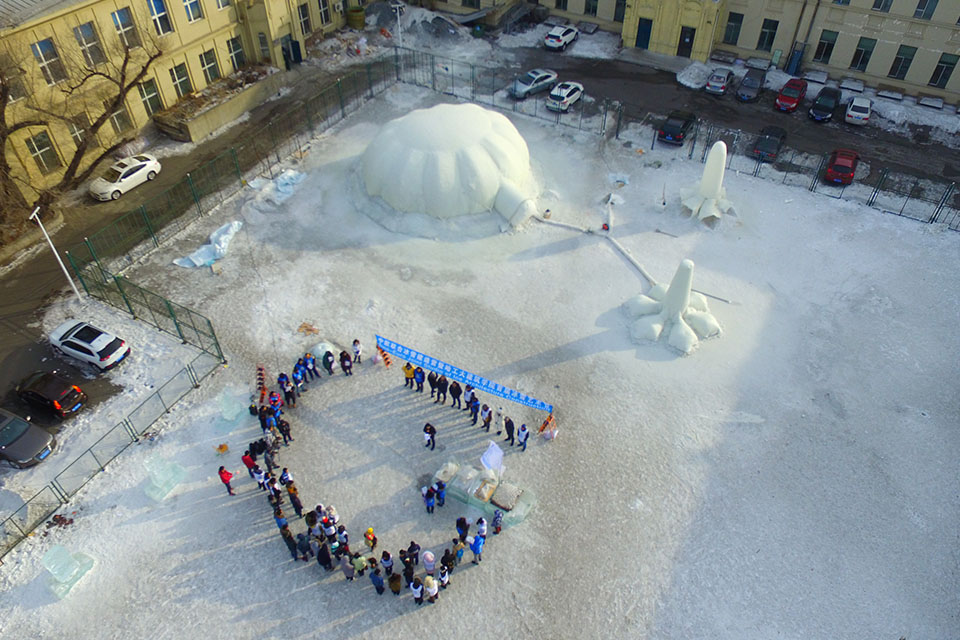Design
The design process was divided into two parts: First is the ice dome and tower design with specific
goals by the core team and the other part is the open design with self target by each group of students.
The aim of ice dome and tower design is to use ice and snow composite material and the technology of
inflatable membrane and ice spray forming to realize the construction of the ice shell.
Meanwhile verify the performance of the ice shell on the span and height in order to lay the foundation
for further design and construction of large-scale ice shell buildings.The cooperation of architecture
students and civil engineering students went well and finally,six design groups completed six models
with different shapes as a scale of 1m x 1m.
References:Peng Luo,Lu Yuana, Wang Kaia, Yue Wub, Arno Pronk,Ice Architectural Design Teaching by Construction——Review
of Sino-Euro Joint Studio of Ice Architecture Construction,Hamburg:International Association for Shell and Spatial
Structures,2017
